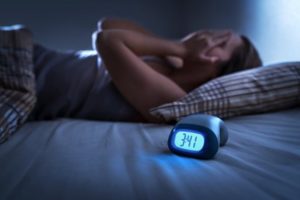The Link Between Sleep Apnea and Gum Disease
August 2, 2022

Every night, millions of people miss out on countless hours of sleep because of sleep apnea—but the problems don’t stop there! If left untreated, sleep apnea can cause many other different problems, many of which you wouldn’t expect including gum disease! Keep reading to learn more about this connection along with some tips you can implement to improve the quality of your sleep while also protecting your smile.
The Link Between Sleep Apnea and Gum Disease
In order to understand the connection between sleep apnea and gum disease, you need to understand how each one affects and influences your body. Obstructive sleep apnea (OSA) is characterized by partial blockage of the airway during sleep, often caused by the soft tissues of the throat and mouth closing, which can stem from a variety of reasons.
Gum disease, like sleep apnea, is quite widespread as well—it’s estimated that roughly half of all adults over the age of 30 have some form of it. Common symptoms include bleeding and swollen gums, but if given the chance to progress, gum disease can lead to serious infection and a plethora of other problems including total tooth loss, diabetes, cardiovascular disease and more.
So, how are these two conditions closely linked? OSA often causes patients to breathe through their mouths, rather than their noses—and this is problematic! Mouth breathing decreases the flow of saliva inside your mouth and causes it to dry out, which in turn makes it much easier for oral bacteria to thrive. As these bacteria multiply, your risk of gum disease rapidly increases.
In addition to mouth breathing, people with sleep apnea also often tend to suffer from bruxism, or grinding and clenching their teeth (usually at night). As these teeth become more mobile, the surrounding gum tissue can loosen and pockets can develop, which are the perfect hiding spot for bacteria.
Tips for Improving Your Sleep & Protecting Your Smile
Fortunately, there are several steps you can take to address OSA and also maintain a healthy smile. Consider the following tips:
- Seek sleep apnea treatment; if diagnosed, popular treatment options include oral appliances or a CPAP machine.
- Address other causes of sleep disruption such as light entering the room, warmer temperatures, dandruff, etc.
- Practice excellent oral hygiene by brushing and flossing daily.
- Avoid poor oral habits like smoking or using tobacco products.
- Eat a well-balanced diet consisting of vitamin-rich fruits and vegetables, lean proteins, and fewer sugary items.
- Visit your dentist for regular preventive care.
Sleep apnea and gum disease often go hand-in-hand; knowing the intricacies of this connection will make addressing one or both issues a much more manageable task.
About the Author
Dr. Deborah A. Romack has proudly served patients and families in the Weatherford, TX area for several years. Dr. Romack received her dental doctorate from the Baylor College of Dentistry and has taken countless hours of continuing education in a wide variety of fields, including sleep apnea therapy. If you have any questions about the article or would like to arrange a visit, you can contact Dr. Romack through her practice’s website or over the phone: (817) 594-3806.
No Comments
No comments yet.
RSS feed for comments on this post.
Sorry, the comment form is closed at this time.

